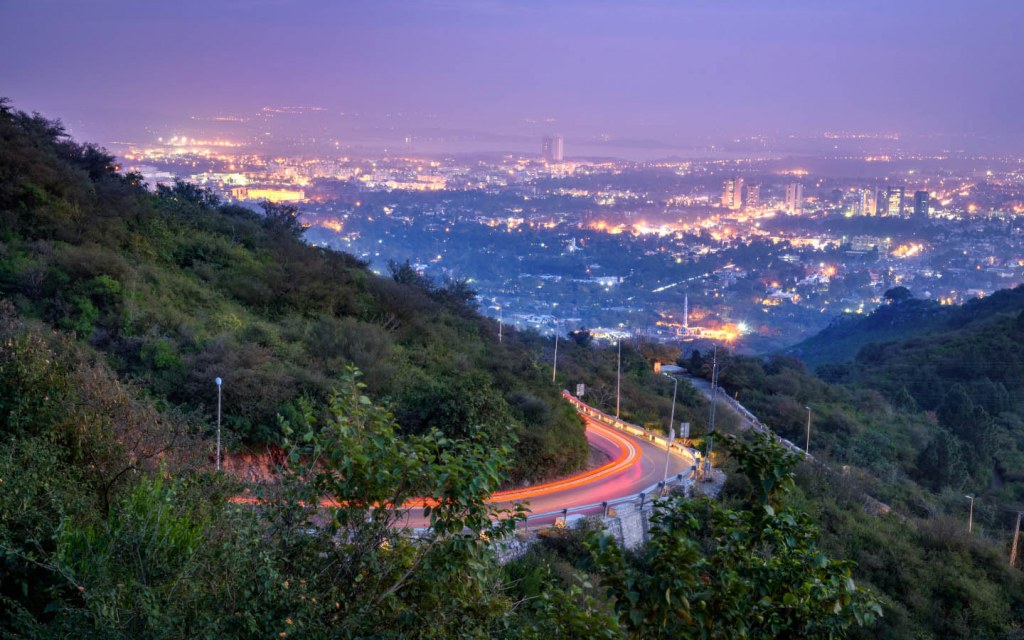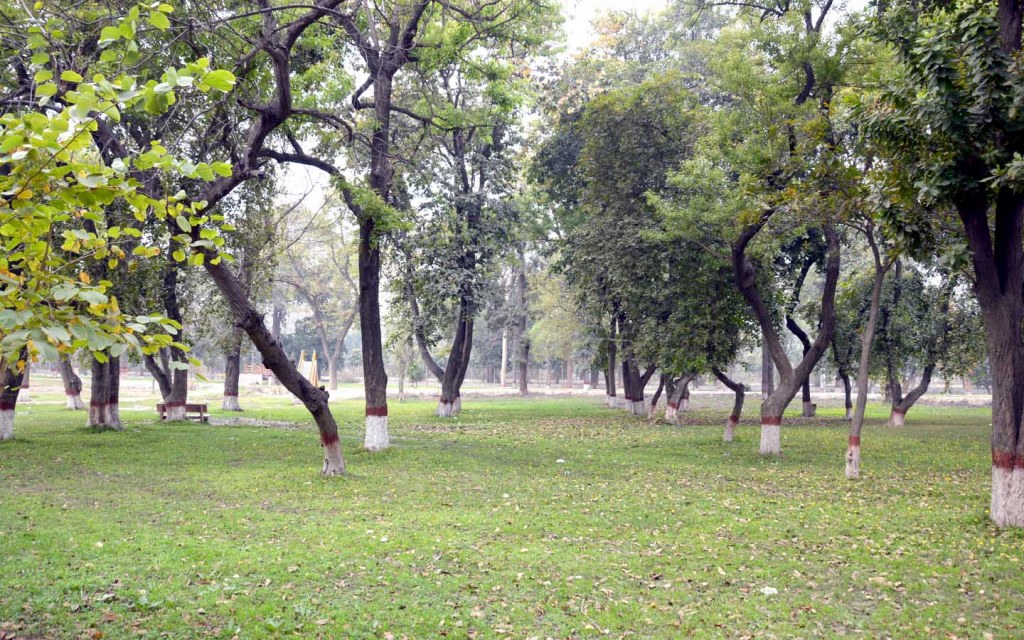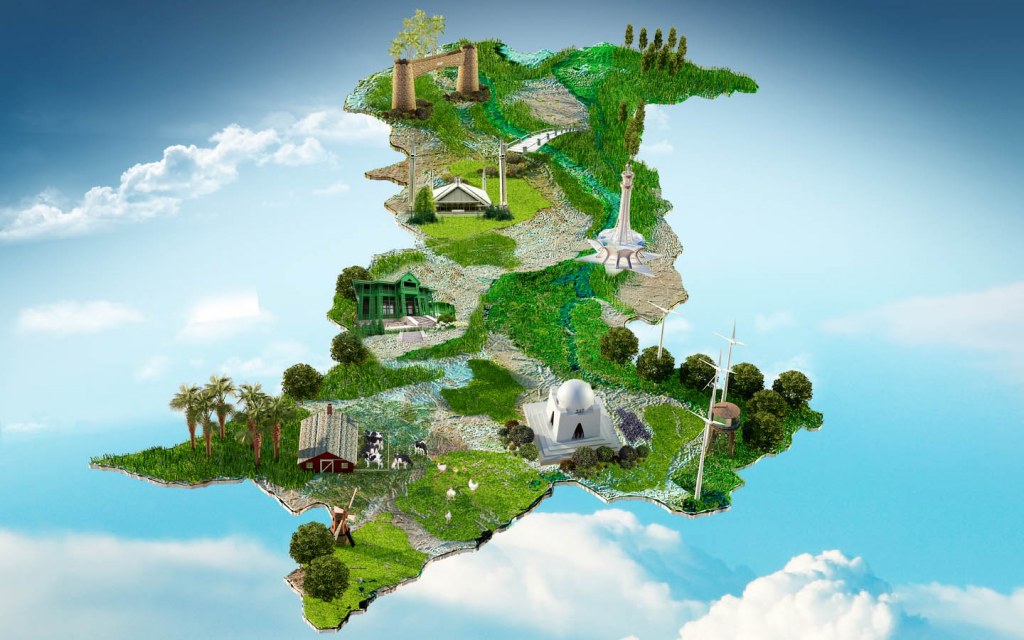Update (March 15, 2022):
Federal Capital Gets a Brand New ‘Hill Park’
In a recent development, the Chairman of the Capital Development Authority Amir Ali Ahmed inaugurated a public park located on a hill on 3rd Road in Sector G-10/4. During the inauguration ceremony of this urban open space, he also introduced the spring tree plantation drive 2022 and more than 500 trees were planted during the event by the CDA’s department of environment.
The new hill park in Islamabad has many different recreational facilities, which makes it a perfect picnic spot for families in the federal capital. There are swings for children, walking and jogging tracks, and a cycling track.
To enhance the beauty and horticulture features of this park, different types of seasonal flowers have been planted in the park so that anyone visiting the park can make the most of a beautiful natural environment in the pleasant atmosphere of Islamabad. For the convenience of visitors, benches are also available at different locations in the park.
Update (Feb 22, 2022): According to the Special Assistant to Prime Minister on Climate Change Malik Amin Aslam, the federal government, in consultation with all provincial forest departments, has formulated an overarching strategy for a nationwide spring tree plantation.
Prime Minister Imran Khan is expected to inaugurate this tree plantation initiative for the spring season today, February 22 — the World’s Scout Day— which is also locally observed as “Plant for Pakistan Day” each year.
“We have set a whopping target of planting over 540 million plants all over the country during the spring season spread over February to April under the 10 Billion Tree Tsunami Programme (TBTTP)”, Malik Amin said.
He also stated that around 750,000 members of the Pakistan Boy Scout Association (PBSA) would be a part of the spring tree plantation campaign, which would be carried out at both national and provincial levels.
“Planting a tree in spring gives the tree an early start in the growing season. It can then spend the summer and autumn settling in and building a root system before the cold weather arrives,” he added while explaining the vitality of the spring season to kick-start plantation campaigns.
Update (Nov. 5, 2021): Provincial Minister of Punjab for Housing Asad Khokhar recently planted a sapling at Allama Iqbal Park and inaugurated a Miyawaki urban forest in Rawalpindi. Many other key officials from the city’s Parks and Horticulture Authority (PHA) and concerned government institutions also attended the inauguration ceremony and planted saplings in the newly introduced urban forest.
While talking to the media at the ceremony, Asad Khokhar said that federal and provincial governments are working together on various types of green initiatives to create a healthier and greener environment for future generations.
The provincial minister further revealed that around 20 urban forest projects are currently underway in different parts of Rawalpindi. He also said that the presence of urban forests ensures food availability (and shelter) for different bird species living within metropolitan areas.
Update (Nov. 1, 2021): President of Pakistan has recently inaugurated Jinnah Urban Forest and Pakistan’s first-ever Islamic Garden in Karachi. The horticulture project is located right next to the mausoleum of Quaid-e-Azam Muhammad Ali Jinnah.
The concept of this all-new Islamic Garden in Karachi has been inspired by the Islamic Botanic Garden in Sharjah. It has been planted, looked after, and maintained by Shaukat Omari, an 80-year-old retired civil engineer.
Similar to the park in Sharjah, this Islamic Garden features different types of plants and trees that have been mentioned in the Holy Quran. The species that have been planted so far include fig trees, date palms, olive, pomegranate, and citrus plants.

President Alvi said that urban forestry in a megacity like Karachi is like a breath of fresh air. According to him, this greenery project would serve the purpose of lungs, purifying the city’s polluted environment and converting it into fresh, clean air.
A fully-fledged fruit garden is another noteworthy feature of the Jinnah Urban Forest in Karachi. It has been planted with 22 different species of fruit-bearing trees and plants. They include guava, Chikoo, Sharifa (Custard apple), mango, banana, jamun (Java plum), mulberry, lasura (Cordia myxa), papaya, pomegranate, falsa, and mulberry among others. A total of 5,000 trees have been planted in the horticulture project so far.
To learn more about other noteworthy projects promoting the concept of tree plantation in Pakistan to combat climate change, continue reading this blog.
Update (July 26, 2021): Prime Minister Imran Khan has recently inaugurated the monsoon plantation drive in Islamabad. Addressing the occasion, he said that Pakistan was playing a very important role in bringing down its carbon footprint, which was to reverse the impact of climate change.
He also added that the country’s efforts to increase greenery and vegetated areas were now being recognised by the international community. The premier also urged the citizens to play their part (individually and collectively) in the tree plantation drive, which was to enhance and restore the forest cover that Pakistan had lost in recent years as the issue remained neglected for a very long time.
The Prime Minister also stated that Pakistan had to be transformed into a green country to reduce the menace of pollution and fight global warming. In the meantime, if you want to learn more about the other plantation campaigns introduced nationwide in recent years, continue reading this blog.
Update (March 3, 2021): A memorandum of understanding (MoU) has recently been signed between the Pakistan Space & Upper Atmosphere Research Commission (SUPARCO) and the Ministry of Climate Change, according to which, the progress of Prime Minister Imran Khan’s Billion Tree Tsunami Project will be monitored by a satellite. It is to ensure the transparency of the government-launched tree plantation drives across the country.
The Billion Tree Tsunami Project is a massive-scale development, which is now gaining international attention. It has highlighted the role of Pakistan as one of the leading countries in the world that are putting in serious efforts to tackle the challenges posed by the phenomena of global warming and climate change.
Pakistan is a country that witnesses all four seasons, thanks to its unique geographical location. However, lately the country has started experiencing a number of environmental issues, deforestation being one of them. There is a lack of awareness in terms of tree plantation in Pakistan. Loss of trees and plants, especially human-driven, is occurring on a large scale for various purposes such as burning firewood, making furniture and building houses.
Trees provide us with oxygen and a soothing environment. Therefore, given the fact that we’re increasingly losing green belts to urbanization, and global warming, saving trees should be the world’s top priority. Thankfully, the Pakistani government has finally decided to pay heed to environmentalists’ warnings and woken up from its deep slumber of apathy.
Before we talk about the tree plantation in Pakistan, let’s have a look at some of the most popular green spaces in our country
The Pakistani City with Ample Greenery

Of course, you already know which city we are going to mention here. Islamabad has been recognized as one of the most beautiful cities in the world. Its beauty doesn’t lie in tall buildings and other man-made structures but in the wonders of nature that surround it.
Case in point: Margalla Hills, which were declared a national park in 1980, is believed to have around 600 species of plants and more than 300 species of animals. However, the increasing pace of development in the federal capital is also jeopardizing its natural beauty. Many awareness programs and campaigns on different levels have been organized in this concern to streamline things in a way that they would not cause harm to the natural environment of this city.
The Largest Forest of Pakistan

The forest of Changa Manga is the largest man-made wildlife reserve of Pakistan. Covering a large area, it is found in the Lahore and Kasur districts of Punjab. The menace of illegal deforestation in Pakistan on a vast scale has also caused severe damage to this natural reserve of our country. Different types of drives and campaigns have been carried out for tree plantation in Pakistan that strongly discourage the practice of deforestation. The forest of Changa Manga, which was planted in the 1890s, is also in need of these campaigns that effectively spread awareness about the horrors of deforestation and emphasizes on the importance of tree plantation in Pakistan.
One Billion Trees Initiative in KPK
The matter of planting ‘One Billion Trees’ in the province of Khyber Pakhtunkhwa has been making headlines ever since it was initiated over a couple of years ago. Due to the relentless efforts of the provincial government and some non-profit organizations, this tree plantation campaign turned into an absolute success.
This noteworthy achievement has also been significantly backed and praised by Prime Minister of Pakistan Imran Khan. The land of KPK, which was once turning barren a few years ago, has many dense forests now. This transformation of Khyber Pakhtunkhwa is another significant step towards a green Pakistan. It has not only been recognized nationally but has also been noticed by international bodies working for the conservation of Earth’s environment.
Nationwide Tree Plantation Campaign

Following the success of the KPK Tree Plantation Drive, the authorities have taken up a bigger challenge now. They are now planning to conserve the greenery of the entire country by taking small but impactful steps. Different types of campaigns and awareness programmes are going to be a part of it. Almost all of the major cities including Karachi, Lahore, Quetta, Faisalabad and Islamabad are expected to take a significant part in this drive.
Compared to the KPK tree plantation drive, the figures have increased ten times this time and the Prime Minister of Pakistan has goals to plant ten billion trees countrywide. This tree plantation campaign is called ‘Plant for Pakistan’ that already kicked off in the latter half of 2018. Any responsible citizen of Pakistan can be a part of this drive to save greenery in Pakistan.
Recently, the acting Prime Minister of Pakistan, Imran Khan, has declared August 18 2019 as plantation day and urged the citizens to step forward and contribute their part in this national cause by planting at least two saplings. Emphasizing on the importance of tree plantation in Pakistan, he said, “Plantation is not an option, but a need.”
How can we play our part to promote greenery in Pakistan?
Merely taking interest in or listening to the news stories related to the initiatives taken by the government or other organizations regarding tree plantation in Pakistan is not going to be enough. We have access to one of the most powerful social awareness tools in today’s world. We are pointing towards social media, of course. If a hashtag on Twitter can bring a revolution in a country, then it shouldn’t be difficult to rally people for a cause that can save our future generations and to strive for clean and green Pakistan.
Spreading awareness about the harms caused by deforestation in Pakistan and the consequences and disastrous aftermath of human intrusion in nature is crucial. Using social media connections, people can easily gather on one platform and fight against the unlawful cutting of trees. Plus, you can also start the tree plantation drive from your neighbourhood or even from the city you are living in These are some of the ways we can help the government to get somewhere near the goal of planting 10 billion trees in Pakistan.
If you have any queries related to our today’s blog, then reach out to us at blog@zameen.com.
Catch more of our posts discussing environmental improvement in Pakistan and ways you can be a part in it individually and collectively by subscribing to Zameen Blog, Pakistan’s best lifestyle blog.



